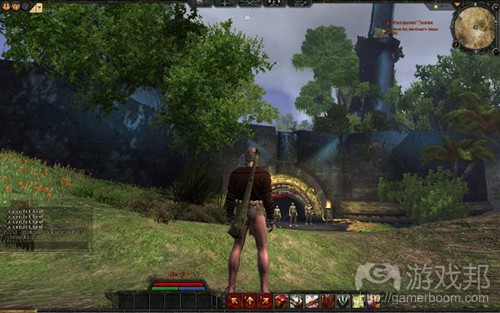订阅付费版MMO游戏是否应转变为免费模式?
作者:Christian Nutt
虽然大量基于订阅服务的网络游戏已转变为免费模式,但有些开发商似乎仍然相信他们可以采用订阅模式。而不少工作室选择妥协,转向免费模式。
目前,游戏开发商发现,无论他们是否喜爱免费模式,该形式已大量蔓延,玩家希望MMO游戏可以采用免费增值模式。
最近,Funcom Montreal创意总监Craig Morrison指出,《Age of Conan》于2008年发行两年后,便采用了兼具订阅选项的免费模式。
Morrison已深深思考过MMO游戏转变为免费模式这一话题,但他明显表现出对这种方式的不安。最终,他似乎并不打算放弃订阅服务模式……即使他目睹了这一领域正发生的变化。
Morrison指出:“我想,毫无疑问,西方游戏正向免费模式靠拢,因为这是游戏市场的需求。从易用性的角度上看,这正是用户的需求。”
游戏市场的目前趋势是步入免费游戏行列——订阅类游戏发行后,由于大量订阅者退订,这些游戏随后被迫转为免费模式。比如,EA与BioWare在《星球大战:旧共和国》发行不到一年的时间里,便将其转变为免费模式。
但Morrison预见了这种趋势的可能结局:由于玩家期待这些游戏最终能够转变为免费版本,所以他们可能会消极应对付费模式,只是坐等形势转变。而这种现象会加速推进开发商采用免费模式。
Morrison担心,Funcom会由于玩家的这种期待而转变基于订阅模式的《神秘世界》。“最终,用户会出现‘哦,我们会等到它转变为免费游戏’的想法,作为开发商的我们不希望得到这种结局。你不希望玩家这样做‘我确实想要体验那款游戏!但我会等到它转为免费模式。’”
讽刺的是,最先引领这一潮流的游戏工作室正是Funcom,而Morrison却颇为担忧这种转变模式。
他解释道:“我们已经把《Age of Conan》转变为免费模式;《Anarchy Online》是首款转变为免费模式的西方游戏——这是2005年发生的事情。”
甚至是一直抵制这种转变模式的付费游戏,例如暴雪的《魔兽世界》也不得不为了引进新玩家而妥协,并提供无限制的免费试用服务。
Morrison认为,7-10天的有效试用期“很快就会消失。因为玩家不会欢迎这种模式;他们将会更加期待‘开发商提供免费游戏’。”他指出:“现在,玩家期待市场上出现大量免费游戏内容。”
当然,这也存在一个优势,Morrison表示:“如果玩家发现混合模式(或是提供订阅服务,又或是在虚拟商店出售物品)确实提供了附加价值,那么他们就会接受。我认为,如果玩家知道自己确实获得了附加价值,他们不会反对为游戏掏钱。”
他解释道,同比一开始就基于免费模式理念构造的游戏,那些之后才转变的游戏仍试图将玩家引进订阅模式。他表示:“它们不是真正的免费游戏,它们采用混合模式,即免费模式属于试玩部分,而后,它们会把玩家引入所谓的订阅模式。”
“无论是购买时间或虚拟货币,《无尽的任务》仍提供金、银、铂三种会员资格;《指环王》也包含一些类似元素;《Age of Conan》仍设置等级机制。我们仍围绕订阅服务这一核心理念,因此它们确实属于混合系统。”
Morrison仍旧看好付费订阅模式在MMO游戏领域的未来。
“我想,我们可以把订阅与免费模式当作工具。我们可以有效地使用它们,同时也能会把它们搞砸……这取决于游戏本身。我们不会断言‘订阅模式将走向末日;市场上将不再出现它的影子,’或者,‘免费模式是唯一的盈利渠道。’我认为这主要取决于游戏与项目本身的情况。”(本文为游戏邦/gamerboom.com编译,拒绝任何不保留版权的转载,如需转载请联系:游戏邦)
Free-to-play: It’s what Western MMO players are coming to expect
by Christian Nutt
Even with the massive shift from subscription-based online business models to free-to-play, it seems that some developers still want to believe they can make subscriptions work. These studios have the tendency to give in, and make the switch to free-to-play.
Nowadays, game developers are finding that — whether they like it or not — free-to-play has proliferated enough that players expect MMOs to use the free-to-play business model.
Recently, Gamasutra spoke to Craig Morrison, creative director at Funcom Montreal, the studio behind Age of Conan. That game launched in 2008, but a couple years later adopted a free-to-play model, with a subscription option.
Morrison was thoughtful about the topic of the shift of Western MMOs to free-to-play, but he expressed obvious unease with it. In the end, it seems, he doesn’t yet want to give up that subscription business model… even if he can see things changing.
“I think you can definitely see Western games being designed to start at the gates as free-to-play games, because that’s what the market will expect. That’s what the users will want, from an accessibility point of view,” says Morrison.
The current trend is to “go free-to-play” — subscription games launch, then are modified to free-to-play titles as their subscribers begin to quit in significant numbers. EA and BioWare took the faltering Star Wars: The Old Republic free-to-play less than a year after its launch.
But Morrison sees a potential endgame to this: Now that players have the expectation that games will eventually make the free-to-play shift, they might hold off and simply wait. This, in turn, will accelerate the business model’s adoption.
Morrison worries that the struggles of Funcom’s subscription-based The Secret World might even stem from this expectation. “Eventually it only stands to reason that people’s thought process is ‘Oh, well, I’ll wait till it’s free-to-play,’ and that’s not something we want as game developers. You don’t want players to be going, ‘I really want to play that game! … But I’m going to wait.’”
It’s a bit ironic that Morrison has trepidation about the shift, though, as Funcom is one company that helped pioneer the trend.
“We’ve already moved Age of Conan to free-to-play; Anarchy Online was the first game — the first Western game — to go free-to-play, way back in 2005,” he notes.
Even premium games that have so far resisted the shift, like Blizzard’s indomitable World of Warcraft, have made concessions to the need to bring in new players with unlimited free trials.
Morrison sees the days of the limited seven or 10-day trial “disappearing fast. That will no longer be a model which clicks with the players; they’ll more be looking for, ‘We expect a free-to-play offering.’” Players now expect “a large amount of content for a considerable amount of time on a free-to-play basis,” he says.
Of course, there’s an upside to that, he says: “If they see the added value in moving into a hybrid, or a subscription, or buying something through a virtual store, then they will. I don’t think players are averse to spending money if they think they’re getting added value.”
He notes that the games that have converted, rather than been built from the ground up for free-to-play, still try to get players into subscriptions. “They’re really not” free-to-play games, he says. “They’re using a hybrid model, where the free-to-play is a trial and then what they really want is the users to move on to whatever they’ve called what used to be a subscription.”
“Whether it’s premium time or coins — EverQuest has silver, gold, and platinum memberships; Lord of the Rings has something similar; Age of Conan has tiers. We’re really all still subscriptions at the core of that, so they’re really hybrid systems.”
Still, Morrison clings to the concept of a future for premium subscription MMOs.
“I think we see subscription and free-to-play as tools. And tools can be used well, they can be used badly… It depends on the game. We don’t categorically go, ‘Subscriptions are dead; there will never be subscriptions anymore,’ or, ‘Free-to-play is the only way to monetize your games.’ I think it depends on the game and it depends on your project.”(source:gamasutra)








































 闽公网安备35020302001549号
闽公网安备35020302001549号